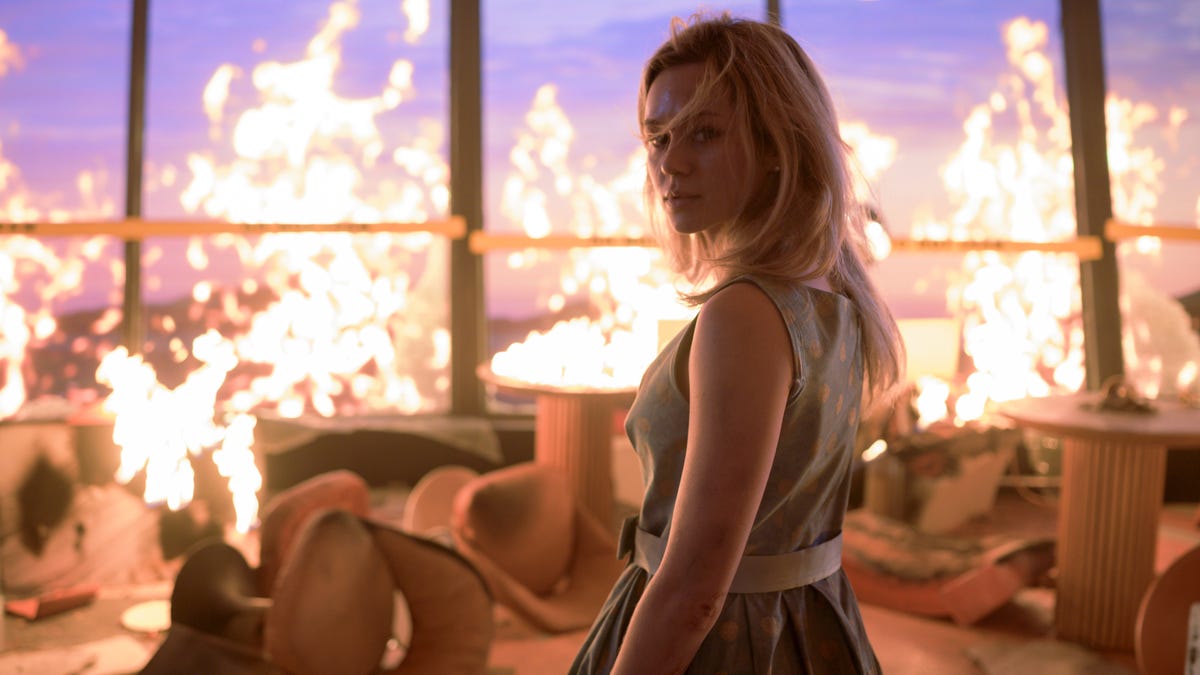‘Final Destination Bloodlines’ trailer teases grisly deaths
A family is marked for death in “Final Destination Bloodlines,” the horror series’ first installment since 2011.
After a 14-year hiatus, “Final Destination” is back to gift fans some brand-new phobias.
The horror series famous for elaborate death scenes, in which characters are killed in freak accidents related to everyday situations, rises from the dead with “Final Destination Bloodlines” (in theaters May 16), the first installment since 2011 and first to be filmed for IMAX. In keeping with franchise tradition, the marching orders were clear for directors Zach Lipovsky and Adam Stein, series newcomers best known for the sci-fi thriller “Freaks”: Make more daily activities terrifying.
“The key thing is starting with something that’s very relatable, that all of us experience every day, that’s not fantastical − it’s something that you’ll run into during your daily life,” Lipovsky says. “And then figuring out how to ruin that for you, so that anytime you ever experience it in your life again, you think of ‘Final Destination.’ “
After seeing “Bloodlines,” he warns, “every time you put on your wedding ring, you’ll think twice.”
In the 25 years since the original movie, “Final Destination” has followed an established formula: A character has a premonition that allows them and others to survive a disaster, only for the group to die one by one because they were not meant to live.
“A big challenge with ‘Final Destination’ is predictability because everyone knows that these characters are going to die,” Stein points out.
So, six films in, “Bloodlines” aims to keep fans on their toes by upending the template. For the first time, the plot centers on characters who did not cheat death − at least, not personally. Instead, the film follows a woman, Stefani (Kaitlyn Santa Juana), whose grandmother, Iris (Gabrielle Rose), had a premonition and survived a tower collapse decades ago. Given that Iris was fated to die before having kids, Stefani’s family shouldn’t exist, so death is coming for them.
The change “allowed for some really interesting retooling of the formula that fans are used to,” Lipovsky says, starting with the transition from the film’s opening disaster to a new character in a different time period − a stark departure from how every previous movie began. The goal was that “even if you’re a massive fan of the franchise, you didn’t know where things were going.”
Stein says focusing on a family also allowed “Bloodlines” to raise the stakes from past “Final Destination” movies, in which the victims have typically been either friends or people who don’t know each other.
“When it’s family members that are on the chopping block, the characters have a lot more urgency,” Stein says. In previous installments, “when someone dies, they go, ‘Oh, that’s too bad. Who’s next?’ Whereas this one, there’s real weight to it.”
Despite tweaking the formula, “Bloodlines” adheres closely to franchise lore. Series regular Tony Todd, who died last fall, returns for a touching posthumous scene that references another fan favorite character. Rules for cheating death discovered in prior films come into play. And one plot point is an extension of an idea from the original: Iris locks herself in a cabin for years to stay alive, an extreme version of Devon Sawa’s Alex holing up in a cabin in the first movie.
“A big part of this film takes that concept and (asks), ‘What if you did that for 20 years?’ ” Lipovsky says.
Ultimately, though, any “Final Destination” is judged by its kills, and to craft theirs, Lipovsky and Stein closely studied every previous death in the series. Stein says they were especially inspired by the “visceral cringiness” of a “Final Destination 5” scene where a gymnast keeps coming close to stepping on a screw, as well as the surprise ending of a “Final Destination 2” sequence where a man dies after slipping on spaghetti.
“(Fans are) almost rooting for death because death is working so hard to be creative and clever, and really, death is us,” Lipovsky says.
So why do horror fans have so much fun watching the franchise’s infamously gruesome kills? Lipovsky has a theory: The fact that the deaths don’t feel unfair gives the audience permission to laugh along.
“They cheat death at the beginning, which is a bargain we’ve all made peace with,” he says. “We all know we’re going to die, and we all know our time will come, and that’s fair that death will come for us and we will die. And these characters cheat that. So then it’s kind of fair that death comes for them.
“That allows you to kind of enjoy the inevitable end, because it’s just sort of correcting an error. We always explained the tone we’re going for as covering your eyes because you don’t want to watch, but you’ve got a huge smile on your face.”

Leave a Reply